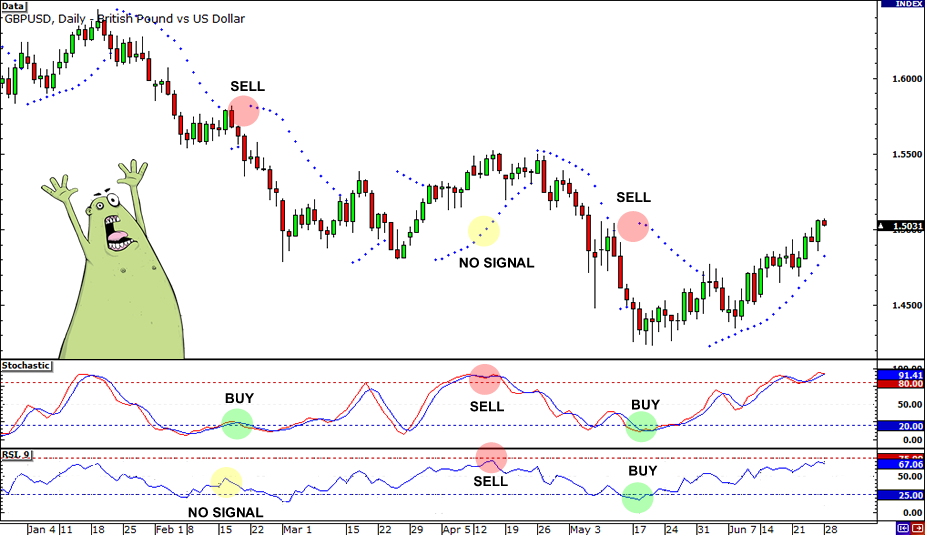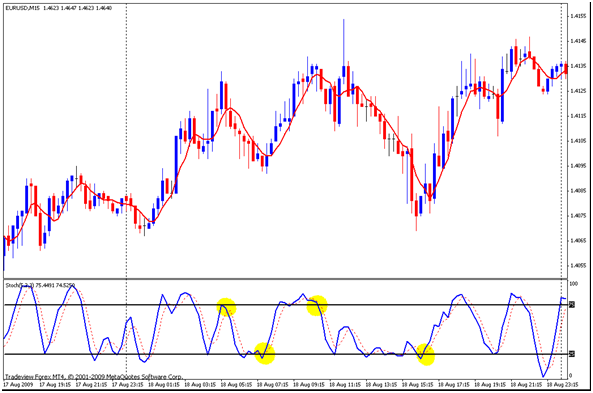Use The Stochastic Oscillator Right And Become Rich
Post on: 6 Июнь, 2015 No Comment

Something fantastic happens every few days with the Stochastic oscillator that will make you rich.
If you learn the one hidden secret about the Stochastic oscillator which is repeated every few days, you will make an incredible profit!
What if you knew a trading secret so simple, yet so powerful involving the Stochastic oscillator, that anyone could use to profit from the Stock market even without experience?
All you need is to understand what the Stochastic oscillator is and what it is not. Ive talked with thousands of traders and Ive discovered that very few know how to use the Stochastic oscillator to pulls gobs of cash from the stock market.
This Secret Will Completely Change Your Life!
Before I tell you the secret of how to use the Stochastic oscillator, lets clear up any misconceptions you might have.
The Stochastic oscillator identifies overbought and oversold conditions, helping us to buy low or sell high. Just as important, it helps avoid buying at high prices or shorting at low prices. This indicator was popularized by George Lane decades ago and is now included in most software packages.
George Lane was also President of Investment Educators Inc. in Watseka, Illinois, where he taught investors and financial professionals basic and advanced technical analysis methods.
Lane began his 50-year career in the financial markets with the E.F. Hutton & Co. brokerage in the 1950s. His broker’s training included time spent under the tutelage of Joseph Granville. Joseph E. Granville, often called Joe Granville, is a financial writer and investment speaker. He popularized the use of on balance volume, a technique of technical analysis that attempts to predict future prices of stocks, commodities, and other financial assets traded on financial markets for which historical price and volume information is available.
A March 2007 article quoted George Lane’s description of his famous indicator: Stochastics measures the momentum of price. If you visualize a rocket going up in the air — before it can turn down, it must slow down. Momentum always changes direction before price.
The Stochastic oscillator measures the capacity of bulls to close prices near the top of the recent trading range and the capacity of bears to close them near the bottom. It ties the high of the range, representing the maximum power of bulls, with the low, representing the maximum power of bears, and with closing prices, representing the actions of smart money.
Bulls may push prices higher during the day, or bears may push them lower, but the Stochastic oscillator measures their performance at closing time—the crucial money-counting time in the markets. If bulls lift prices during the day but cannot close them near the high of the recent range, the Stochastic oscillator turns down, identifying weakness and giving a sell signal. If bears push prices down during the day but cannot close them near the lows, the Stochastic oscillator turns up, identifying strength and giving a buy signal.
There are two types of Stochastic: fast Stochastic and slow Stochastic. Both consist of two lines: the fast Stochastic line, called %K, and the slow Stochastic line, called %D.
The Stochastic oscillator is designed to oscillate between 0 and 100. Low levels mark oversold markets, and high levels mark overbought markets. Overbought means too high, ready to turn down. Oversold means too low, ready to turn up.
Look for buying opportunities when the Stochastic oscillator nears its lower reference line. Look for selling opportunities when the Stochastic oscillator nears its upper reference line. Buying when the Stochastic oscillator is low is emotionally hard because markets usually look terrible near bottoms, which is precisely the right time to buy. When the Stochastic indicator rallies to its upper reference line, it tells you to start looking for selling opportunities. This also goes against the grain emotionally. When the Stochastic indicator rallies to a top, the market often looks fantastic, which is a good time to sell.
The Stochastic indicator should not be used by itself but rather with other technical indicators. When a strong uptrend starts, the Stochastic indicator quickly becomes overbought and starts flashing sell signals. In a sudden sell off, the Stochastic indicator becomes oversold and flashes premature buy signals. This indicator works well only if you use it with another trend-following indicator and take only those Stochastic signals that point in the direction of the main trend.
Should a trader wait for the Stochastic indicator to turn up to recognize a buy signal? Should he wait for it to turn down to recognize a sell signal? Not really, because by the time the Stochastic indicator turns, a new move is usually under way. If you are looking for an opportunity to enter, as soon as the Stochastic indicator reaches an extreme you enter.
Go long when the Stochastics traces a bullish divergence, that is, when prices fall to a new low but the indicator makes a more shallow low. Go short when the Stochastics traces a bearish divergence, that is, when prices rise to a new high but the indicator ticks down from a lower peak than during the previous rally. In an ideal buying situation, the first Stochastics low is below and the second above the lower reference line. The best sell signals occur when the first top of the Stochastics is above and the second below the upper reference line.
Do not buy when the Stochastics is above its upper reference line and do not sell short when it is below its lower reference line. This is probably the most useful way to use the Stochastic. Moving averages are better than the Stochastics at identifying trends, MACD-Histogram is better at identifying reversals, channels are better at identifying profit targets, and the ADX is quicker at catching entry and exit points. The trouble with them is that they give action signals most of the time. The Stochastic identifies no trade zones.
For a related article and video on Stochastic Oscillator Videos check out Why Sometimes Stochastic Oscillator Videos Shouldn’t Exist
Frequently Asked Questions about the Stochastic Oscillator
[accordion]
[toggle title=What is a stochastic oscillator?]
The stochastic oscillator is an indicator that attempts to measure the momentum of a move by taking the location of the close relative to the trading range over a specified number of periods.
The idea is that the speed at which price changes often slows down before a reversal in stock price takes place.
Because the stochastic oscillator uses the range over a set period of time and is itself range bound, traders often use it to indentify overbought and oversold levels.
InformedTrades posted the excellent video below called How to Trade Stochastics Like the Pros Do.
[toggle title=How does stochastic oscillator work?]

The stochastic oscillator works because in an up trending market, prices tend to close near their high. In a down trending market, prices often close near their low. Buy and sell signals occur when the %K crosses through a three-period moving average called the %D.
The formula for calculating the stochastic oscillator is:
%K = 100[(C L)/(H L)]
C = the most recent closing price
L = the 14 day low
H = the 14 day high
%D = 3-period moving average of %K
Manny Backus posted the excellent video below called How to Use the Stochastic Oscillator.
[toggle title=How to set stochastic oscillator settings.]
The most popular stochastic oscillator settings are 14,3 for both the Fast Stochastic Oscillator and the Slow Stochastic Oscillator. For the Full Stochastic Oscillator the most popular settings are 14,3,3.
In StockCharts.com, the stochastic oscillator settings are entered like this:
Some traders like to use a longer range stochastic of 20,3. Sometimes using a longer range with more periods helps to reduce headfakes. Below is a chart of Yahoo using a 20,3 setting. Notice how the divergence between price and stochastic often predicts the next directional swing.
PerfectStockAlert.com posted the awesome two part video series below called Trading with the Stochastic Oscillator.














